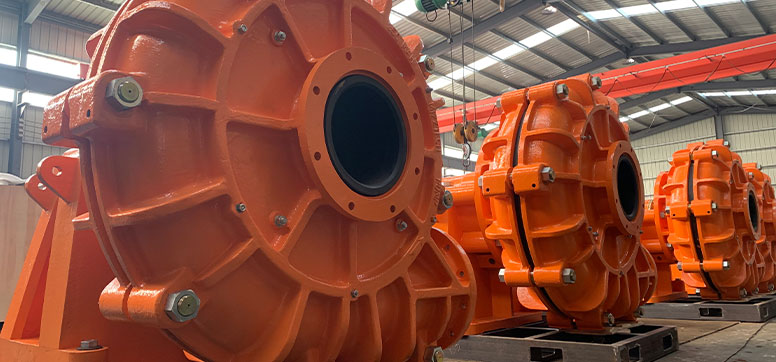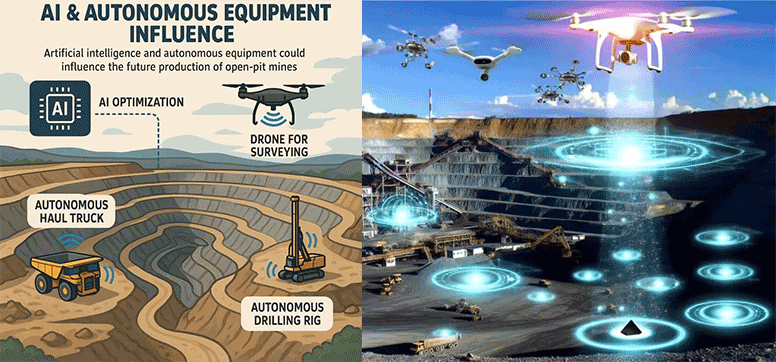A submersible slurry pump is an integral liquid buried hydraulic machinery that works in a medium with an electric motor and a water pump coaxially integrated. Suitable for conveying liquids containing solid particles such as sand, coal slag, and tailings, it is mainly used for the removal and transportation of slurry liquids in enterprises such as metallurgy, mining, and thermal power plants, as well as in dredging projects of lakes, seas, rivers, etc. This series of pumps can work underwater, with flexible mobile installation methods and high slag extraction efficiency. It is an ideal substitute product for traditional slurry pumps.
The ZJQ submersible slurry pump is composed of a motor part, a water pump part, and an intermediate sealing part. As shown in Figure 1, the electric motor and water pump are coaxial and integrated into the medium for operation. The motor is a submersible three-phase asynchronous motor, and the water pump is a single-stage centrifugal structure. During operation, three-phase AC power is transmitted to the motor through cables, which generates a rotating magnetic field and drives the motor rotor to rotate. The motor shaft drives the water pump impeller to rotate through a coupling, and the impeller transfers energy to the slurry medium, causing it to generate a certain flow rate and drive the solid material flow, ultimately achieving the transportation of the slurry.
The motor of the ZJQ submersible slurry pump is located at the upper part of the submersible slurry pump, which is a dry sealed chamber. It consists of stator, rotor, motor casing, motor upper end cover, motor lower end cover, upper and lower bearings, cables, and other components. The upper and lower bearings support the entire rotor, and the main function of the casing is to fix and support the stator iron core. During the operation of the motor, the heat generated due to internal losses is transmitted to the casing through the iron core, Then it emits from the surface of the casing into the surrounding water.
Due to the fact that the electric motor needs to work underwater, it is required that the entire motor be completely sealed to prevent motor failure. The sealing of the entire unit of the submersible slurry pump is divided into two parts: static sealing and axial dynamic sealing. The static sealing parts include: the sealing at the cable outlet, using international advanced cable head production technology, and covering the outer surface of the cable with a rubber sleeve, pressing the cable gland on the junction box, and then filling the inside of the junction box with epoxy resin to ensure the reliability of the sealing at the cable outlet. The sealing between the junction box cover and the motor upper end cover, the sealing between the motor upper and lower end covers and the motor housing, the sealing between the oil chamber and the motor lower end cover, the sealing between the oil chamber and the lower cover plate, the sealing between the water inlet detection assembly and the motor lower end cover, and the sealing between the oil chamber lower cover plate and the oil seal assembly are all precision sealed, all using the "O" - shaped nitrile rubber ring sealing method to ensure the reliability of the sealing.
2.2 Pump design
The water pump part of the submersible slurry pump adopts a centrifugal impeller and a volute type pressure chamber structure, consisting of impeller, volute, suction plate, volute cover plate, mixing impeller and other components. Tighten the impeller onto the pump shaft and rotate it at high speed driven by the motor along with the pump shaft. The impeller is a component that directly works on the liquid inside the pump and serves as the energy supply device for the water pump. The suction port in the center of the pump body is connected to the impeller suction port, and the discharge port on the side of the pump body is connected to the discharge pipeline.
Application of submersible slurry pump:
1. Dredging of rivers, lakes, reservoirs, and ports
2. Sand extraction from rivers, lakes, seas and other water bodies, as well as regional reclamation for land use
3. Sediment and mud pumping during engineering construction
4. Cleaning of sediment in municipal pipelines and rainwater pump stations
5. Cleaning of steel plant sedimentation tanks, beneficiation plant sedimentation tanks, power plant coal settling tanks, and sewage plant oxidation ditch sedimentation tanks
6. Transportation of blast furnace slag and slag in steel plants
7. Transportation of tailings, slag, and slurry in mineral processing plants
8. Removal of coal mine slag, coal slurry, and coal slurry
9. Power plant fly ash, coal slurry, and coal slurry transportation
10. Conveying various solid particles of diamond sand, quartz sand, and steel slag
11. Transport of slurry materials containing various impurities and large solid particles
Structural characteristics of submersible sludge pump:
1. The pump is divided into two structures: hydraulic motor drive and motor drive. When the motor is driven, it adopts mechanical seal protection, which can effectively prevent high-pressure water and impurities from entering the motor cavity; When driven by a hydraulic motor, the pump bearing components are protected by mechanical seals, which can effectively prevent high-pressure water and impurities from entering the inner cavity of the bearing components.
2. In addition to the main impeller, there is also a stirring impeller that can stir the sediment at the bottom of the water into turbulent flow and extract it.
3. The main flow components such as impellers and mixing impellers are made of high wear-resistant materials, which are wear-resistant, corrosion-resistant, non clogging, and have strong drainage capacity, and can effectively pass through larger solid particles.
4. Not limited by suction distance, with high slag suction efficiency and more thorough dredging.
5. No need to equip an auxiliary vacuum pump, lower investment.
6. No need for auxiliary mixing or spraying devices, making operation more convenient.
7. The motor submerges underwater without the need for complex ground protection and fixing devices, making management easier.
8. The stirring impeller directly contacts the deposition surface and controls the concentration through the depth of submergence, making concentration control more flexible.
9. The equipment works directly underwater without any noise or vibration, making the site cleaner.
10. The pump rotates clockwise when viewed from the drive end.







